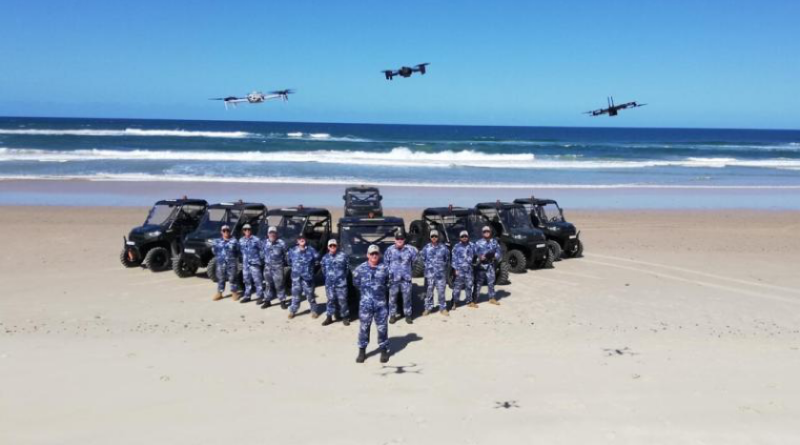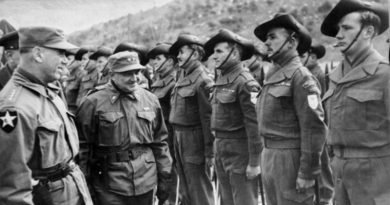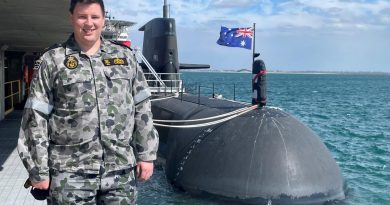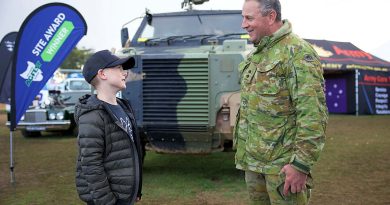Small effort, high pay-off for security drones
Share the post "Small effort, high pay-off for security drones"

With a large estate of test and training ranges across the country, the Air Warfare Centre’s Air Force Test Ranges Squadron (AFTRSQN) has identified uncrewed aircraft systems (UAS) as one of the most advantageous security controls it could implement.
CAPTION: Participants of the first Air Force Test Ranges Squadron Defence Remote Pilot Licence Course, conducted at Evans Head, NSW, and led by Squadron Leader Martin Young. Story by Corporal Steven Lawton. Photo by Corporal David Martin.
As the current security landscape for all locations is complex, AFTRSQN quickly identified that a training system needed to be created in order to realise a safe, effective and credible UAS capability.
UAS Flight Commander Squadron Leader Martin Young identified the existing Defence Remote Pilot Licence (DRePL) as suitable, and has completed the required processes to deliver the training in-house. Essentially a copy of the Civil Aviation Safety Authority (CASA) approved civilian Remote Pilot Licence (RePL), the DRePL enables night flying, beyond visual line of sight (BVLOS) flying and flight above 400 feet.
The team liaised directly with private industry and other ADF units during the concept development phase, quickly identifying the Parrot and Skydio X10 as the ideal platforms for initial employment.
Both US-developed platforms have proven to be a significant capability enabler for operators.
AFTRSQN’s UAS Flight has further developed the course to suit the AFTRSQN operating environment, establishing a foundation for the introduction of more capable systems in the near future.
Courses have been conducted at RAAF Base Edinburgh and Evans Head Air Weapons Range, with more courses forecasted to be run across other sites.
AFTRSQN is also conducting further training to provide UAS operators with the required competency to run future DRePL courses for RAAF.
Future progression will seek to upskill to larger and newer systems, and continue developing specialist skills such as 3D mapping and change detection.
Opportunities to branch into fixed-wing UAS exist and will also be a focus for continued growth allowing for extended BVLOS and the introduction of autonomous missions.
Squadron Leader Samuel Baldock, Executive Officer AFTRSQN, said the pace at which the squadron achieved an organic raise, train, sustain (RTS) capability was exciting.
“The team have leveraged their technical competencies, operational experiences and networks to deliver a capability that has enabled immediate security enhancements,” Squadron Leader Baldock said.
The positive effects on AFTRSQN personnel was something not conceived of in early planning.
While experienced aircrew members developed the course, the majority of participants are from a non-aircrew background.
“Members are trained on key aviation concepts and TTPs (tactics, techniques, procedures), and are able to gain hands-on experience and connection with the air domain that they wouldn’t otherwise,” Squadron Leader Baldock said.
“It’s also been great for team cohesion and moral – I’ve thoroughly enjoyed the requests for flying suits and allowances, call-sign suggestions and patch/brevet ideas.”
Squadron Leader Baldock said that having realised an organic RTS capability on expedited timelines, AFTRSQN continues to evolve and develop TTPs, and looks towards the introduction of larger more capable UAS soon.
“The integration of innovative technologies and collaborative efforts will remain essential as global security dynamics continue to evolve.
“The advent of AI-powered tools like UAS offer a shift from reactive to proactive capabilities allowing AFTRSQN to continue evolving ahead of the fight.
“Given the increased need for AFTRSQN ranges, particularly from coalition and partner nations, the continued application of technology to address security challenges will be vital.”
Officer-in-Charge of Evans Head Weapons Range Flight Lieutenant Jason van Rysbergen summed it up best – “we’re able to easily and directly connect junior aviators with the air domain, deliver important security effects, and all the while having fun”.
“Small effort, high pay-off,” he said.
.
.

.
.
Share the post "Small effort, high pay-off for security drones"





